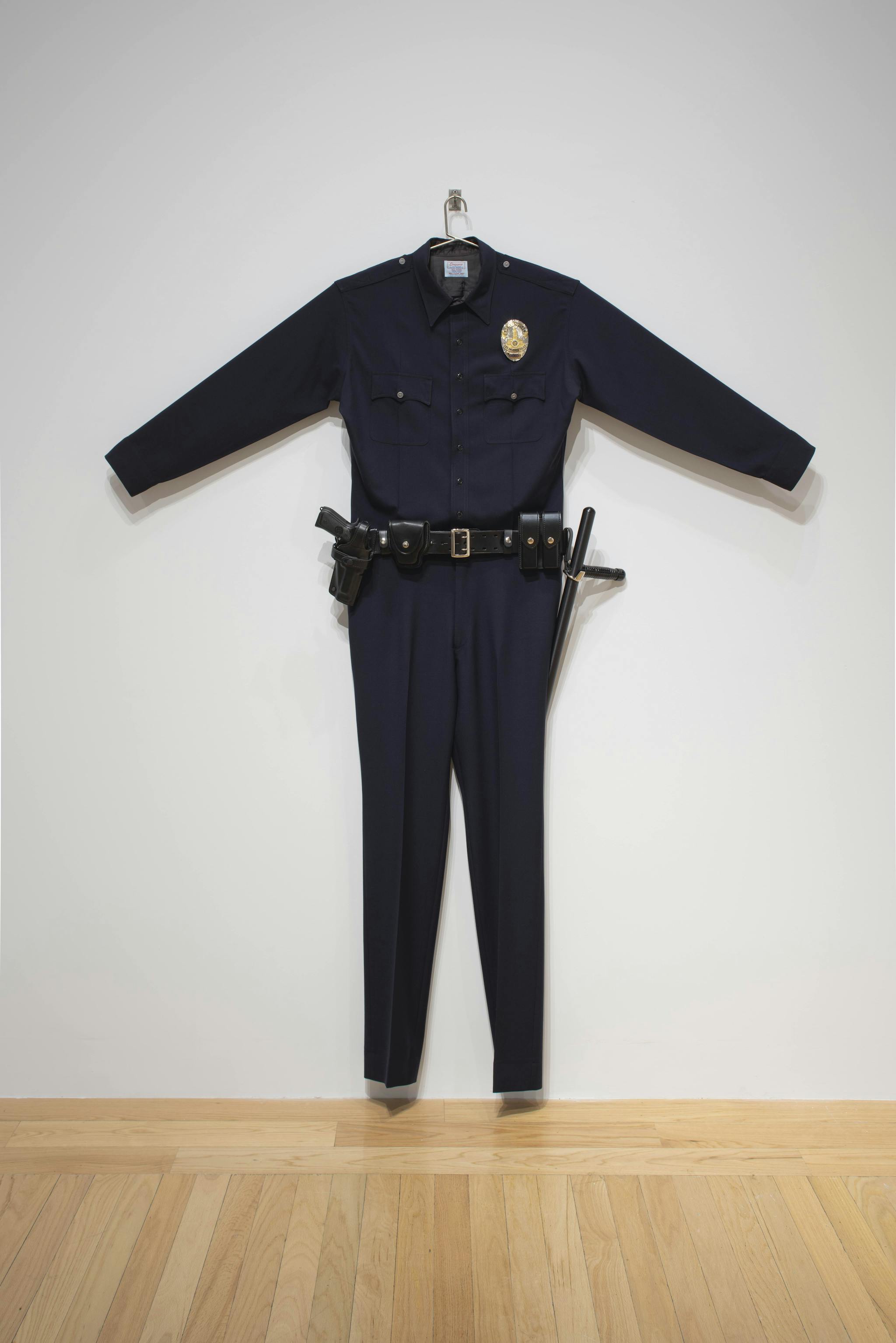The exhibition “Walls Turned Sideways: Artists Confront the Justice System,” which opened in January at the Tufts University Art Galleries in Medford, grapples with the subject of the American prison-industrial complex with a remarkable range of works that are at once moving and pragmatic. Since the 1950s, the number of inmates and prisons in the United States has risen dramatically. The phenomenon began with legislation such as cutbacks in parole release and the war on drugs, wherein longer terms were dealt to people for minor offenses such as selling marijuana. Implicit racial bias repeatedly dealt harsher convictions to Black people, and according to The Sentencing Project, “Black men are six times as likely to be incarcerated as white men and Hispanic men are more than twice as likely to be incarcerated as non-Hispanic white men.” Corporations receive lucrative contracts to provide guards, food, and surveillance, and the prison industry profits when jails are at capacity. Lobbyists protect the monetary interests of the industry, making the reversal of existing legislation difficult.
Since the exhibition first opened, the COVID-19 pandemic set in and its rapid spread throughout the United States has overwhelmingly impacted prison populations. This month, “The Hill” reported that 92 percent of inmates tested for the coronavirus received positive results at the Westville Correctional Facility in Indiana. The imbalance of coronavirus cases in proportion to that of the general public raises in stark relief the vulnerability of imprisoned individuals.
Though the exhibition was scheduled to close on April 19, it remains viewable virtually on the Tufts University Art Galleries mobile app. On Wednesday, April 29, exhibition curator Risa Puleo and participating artists Sarah Ross and Damon Locks will join in conversation via Zoom to discuss ongoing campaigns for prisoner release in the wake of the coronavirus pandemic.
It requires incredible tenacity and resilience to work through the bureaucracy surrounding the prison-industrial complex. Puleo worked on “Walls Turned Sideways” for eight years before it debuted at the Contemporary Arts Museum Houston (CAMH) in 2018-2019. She sought out artists with whom she could build a collective thought process on the problematic and inhumane structure that causes the US to have a higher per-capita incarceration rate than any other nation.
Artists range from internationally recognized figures such as Chris Burden, Glenn Ligon, and Coco Fusco to grassroots artist collectives like the Prison + Neighborhood Art Project in Chicago. Abigail Satinsky, Tufts Galleries’ curator of exhibitions and programs, brought this exhibition to the Aidekman Art Center in collaboration with Puleo, and worked with artists Jenny Polak and Laurie Jo Reynolds to include their art—”ICE Escape Signs” and drawings by former inmates who are part of “The Chicago 400,” respectively—as additions to what appeared at CAMH.
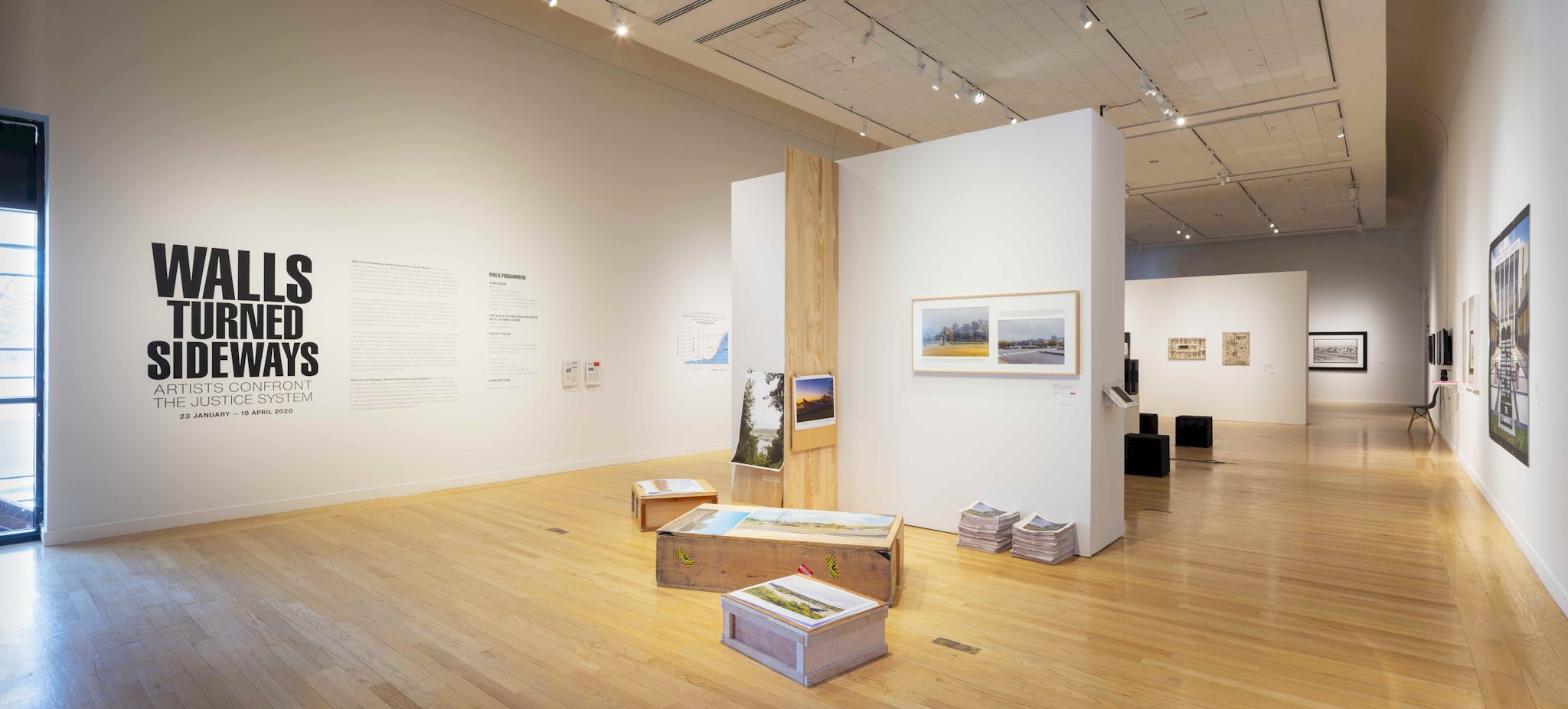
Walls Turned Sideways: Artists Confront the Justice System, Installation view, Tufts University Art Galleries, 2020. Photo: Peter Harris.
With over forty artists participating and covering forty years of production, “Walls Turned Sideways” is likely the largest presentation on the subject to ever be mounted in the United States. The artwork is organized into six thematic sections covering each phase one might experience when brought into the prison system—Profile, Arrest, Process, Ground, Incarcerate, and Exits—spread over two galleries. The first, introductory gallery includes selections from each section. The second and largest gallery displays art from each section in succession. The ground floor is devoted exclusively to Exits, a moving and tragic conclusion, as its works discuss the harsh realities of integrating back into society and death row.
At the opening reception on January 23, Puleo said, “The [prison-industrial] complex is so massive, and there are many ways to intervene.” Satinsky said the exhibition “takes a set of strategies and makes them public and in dialogue with each other,” turning the galleries into “a temporary space of study.” In addition to the exhibition, a companion publication of over 400 pages, published for the CAMH exhibition, documents and builds on artists’ innovative approaches to questioning policies regarding arrests and incarceration. Satinsky explained that the goal of the exhibition “is more than about representation, it is transformational,” and pointed out that the goal was not to privilege art or suggest that artists serve as the best models for how to take on the system. Rather, the exhibition contributes to the multifaceted work to be accomplished, from realization and reform to support and healing, building a full appreciation of the subject. “It really allows a full voice,” she said.
The exhibition title is inspired by social activist Angela Davis, who said, “Walls turned sideways are bridges.” Davis, along with Chance the Rapper, recently attended the first graduation of students from one of the groups included in the exhibition. The artist-led organization Prison + Neighborhood Art Project collaborated with incarcerated students to create a hand-drawn animation, “The Long Term,” about their lives as subjects of long-term sentencing. Situated in the Exits section, their lively array of animated graphite drawings is accompanied by a soundtrack of jazz music and a voiceover of the student artists. A man describes phone calls with his mother: “These few minutes allow them to know I still exist, and they remind me that when I am gone, I am not forgotten.” Another student artist spoke of the way people look at him when he is on the outside in shackles and cuffs: “It’s as if I’m not a part of them but instead something alien. I hate that feeling.” The video cites the truth-in-sentencing and mandatory minimum laws that reduced parole eligibility and kept predominantly Black men behind bars.
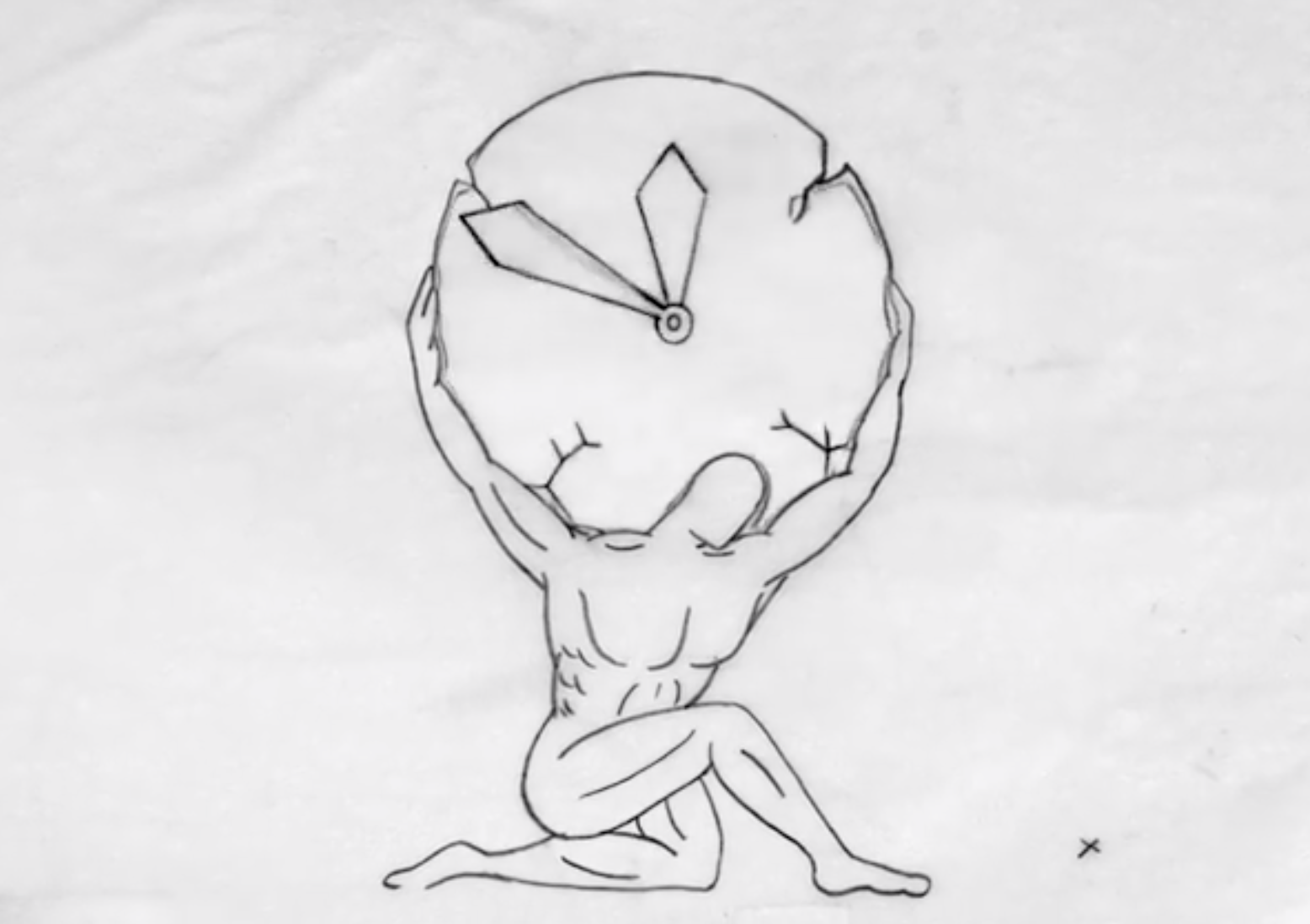
Sarah Ross & Damon Locks with Prison + Neighborhood Arts Project, The Long Term, 2018, still. Animation, 15 minutes. Courtesy of the artists.
Co-directed by visual artists Sarah Ross and Damon Locks, the Prison + Neighborhood Arts Project utilizes experimental learning processes in a curriculum that brings artists into the Stateville maximum security prison in Crest Hill, Illinois, in collaboration with Northern Illinois University. Stateville is one of the last prisons with panopticon architecture built to position guards above the prison yard so they can see prisoners’ movements from as many angles as possible. The video is one of several works of art in the show demonstrating how visual art plays an active role in social change. Many of the artists create work with nonprofit organizations devoted to prisoner rights. Long familiar with the Prison + Neighborhood Arts Project, Satinsky said, “Ten years ago [founder] Sarah [Ross] started bringing artists in, did exhibitions of her students’ work, and had an incredible network of artists working with her, operating with the question of ‘What is an abolitionist aesthetic?’”
This and other open-ended questions are indicative of the social and relational art made for and in direct response to communities. It enables individuals to tell their stories, amplifying marginalized voices. While not the only type of art in the exhibition, it is a crucial one. Tufts University Art Galleries is the only New England venue for “Walls Turned Sideways.” The Tufts University Prison Initiative of Tufts’ Tisch College of Civic Life provides crucial context for this powerful material. The Prison Initiative’s programs bring students and faculty to the prison, and incarcerated students can earn degrees. Founding director Hilary Binda partnered with the Tufts University Art Galleries to create a two-day symposium on March 5 and 6, precisely the type of ripple effect of action steps that builds momentum toward systemic change.
Visual art is not positioned as a superior paradigm to social work, activism, scholarship, or politics, in part because museums are part of the institutional critique in “Walls Turned Sideways.” Puleo and artist Autumn Knight conversed before an audience at the opening reception, and together reflected upon comparisons between museums and prisons.
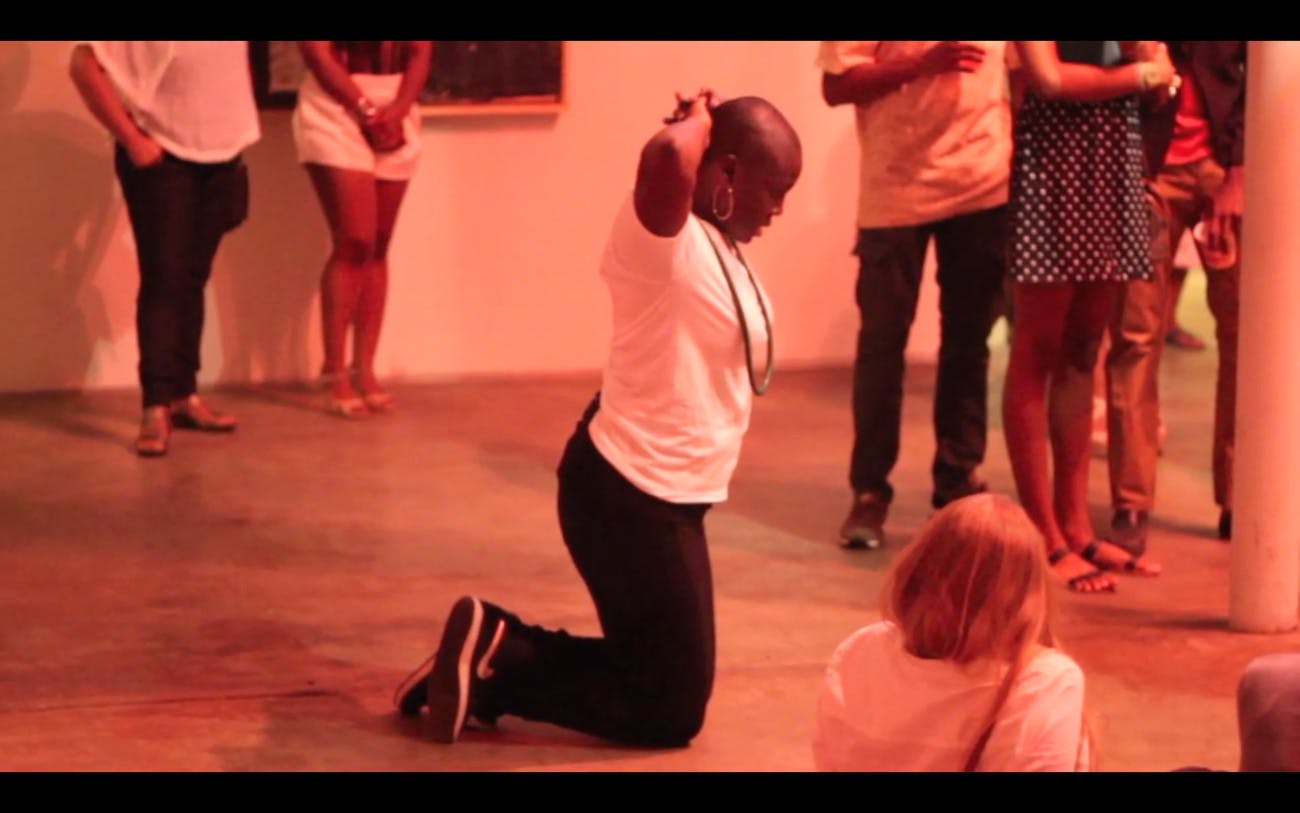
Autumn Knight, Do Not Leave Me, 2013. Video of performance documentation: color, sound, 5:29 minutes. Courtesy of the artist.
It is clear to Knight, who is Black, that Black bodies are seen as a threatening force. She considers racial profiling in her performance “Do Not Leave Me,” which was most recently performed at CAMH, in which she carries a fake gun and engages with museum guests in a busy exhibition space.
Planning for the performance was illuminating for both artist and curator. As Puleo put it, they were attuned to “a civilizing line [the CAMH staff] were trying to toe” in their attempt to preemptively manage the audience’s fear of a Black person walking around the building with a weapon. In the process, “the museum created all the fear for me,” said Knight.
As Knight prepared for her 2018 performance, Nia Wilson was killed by a knife-wielding man in San Francisco in a racially-motivated hate crime. Knight planned to use a knife, but opted instead to carry a fake gun and place razor blades under her tongue.
Despite altering her original plan, Knight intentionally let the museum hang signs warning people that an artist might hold a weapon, amplifying the racial tension surrounding open carry laws. Negotiating with the museum was a “powerful reminder of the root of colonialist, caging, trapping bodies, and rendering certain bodies visible or invisible in art institutional space,” said Knight. She wiped the blood from holding the razor blades onto the gallery floor. To conclude, she slowly knelt down, hands held behind her head as gallery visitors looked on, creating an emblem of seeing and feeling pain in public. Though her performance appears in video form in the Medford installation, her presence shines through.
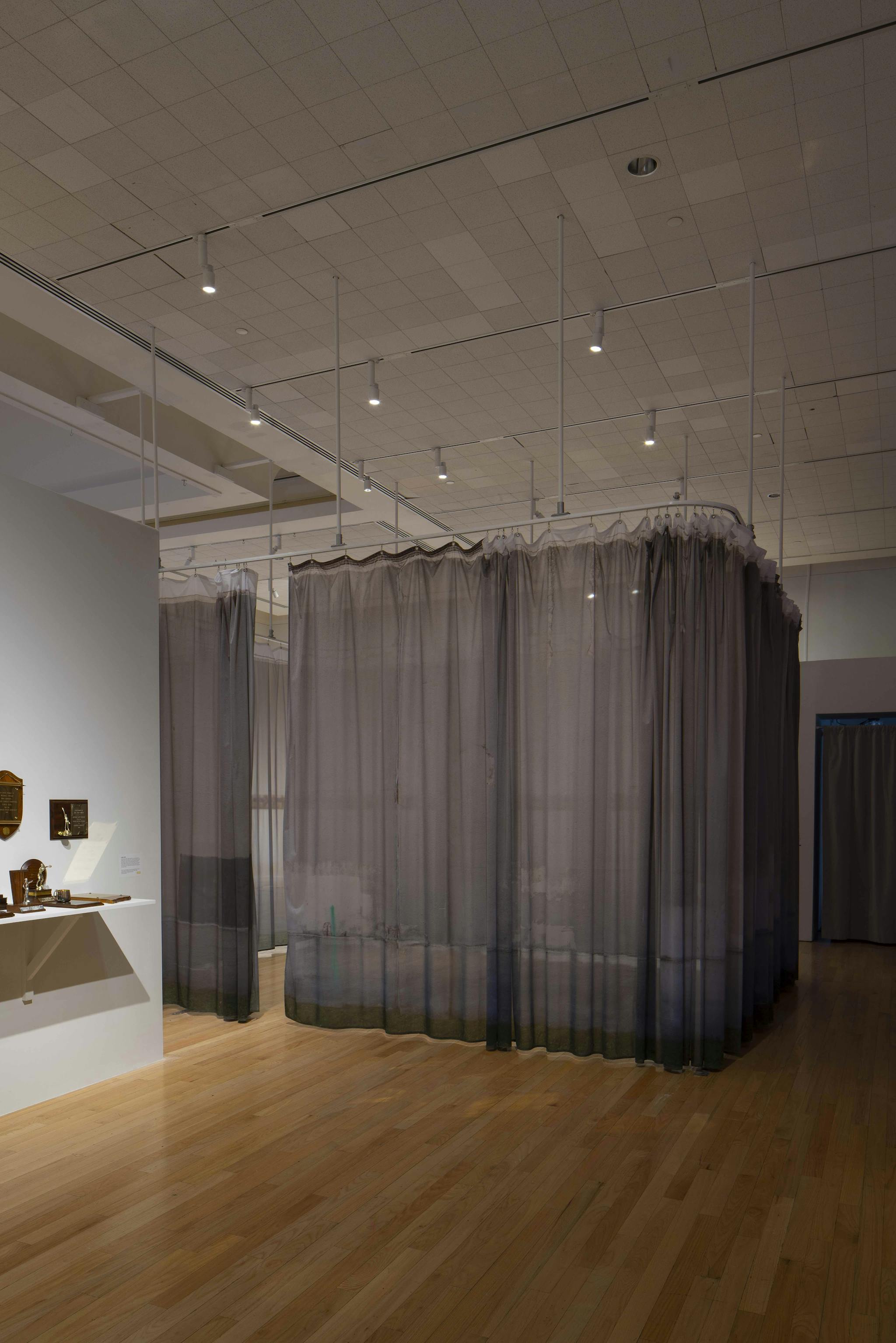
Maria Gaspar, Haunting Raises Specters (By A.G.), 2015, installation view. Digitally printed dye sub fabric, aluminum, beaded chain, grommets. 10 x 160 feet. Photo: Peter Harris.

(Center) Sherrill Roland, The Jumpsuit Project: After the Wake Up, 2017. Primer paint and screwdrivers. (Right) Michelle Handelman, Beware the Lily Law, 2011. Single-channel video, 27:47 minutes. Installation view. Photo: Peter Harris.
An intimate handling of vulnerability comes through in the single-channel video “Men Who Swallow Themselves in Mirrors” by Sable Elyse Smith, which is part of the Incarcerate section. Partly an interview with her imprisoned father, the video shows a close-up of him shaving his head as the Al Green song “Love and Happiness” plays, and the crescendo repeatedly cuts off, preventing the guitar riff from joining the rest of the instruments in the band. The tension communicates in equal measure the humanity and the mundane frustration of a system that works against Black men.
While the exhibition takes care not to create spectacle of others’ pain, the effect of an immersive installation by Maria Gaspar, “Haunting Raises Specters (By A.G.)” lingers long after passing through it. A curtain digitally printed with the photograph of the outer walls of the Cook County Jail in Chicago hangs in a spacious, floating rectangle, an incredibly ethereal echo of a building that holds about 6,100 people daily. Viewers can casually slip from one side of the “prison wall” to the other and are allowed to move the curtain along the track, changing the shape of the “walls.” The fabric is sheer, and through the curtain, trophies from a nearby installation by Carl Pope glitter. From another view, projections of prisoners appear just larger than life in Michelle Handelman’s “Beware the Lily Law,” featuring narratives of trans women in men’s prisons and trans men in women’s prisons. The video contributes to the Incarcerate theme, its subjects seemingly outside the “walls” while guests are within them. The irony of Gaspar’s piece resonates at the tactile level, and the symbolism of rendering transient what seems immovable functions well in concert with the accompanying works of art.
Just beyond Gaspar’s installation is an interactive wall by Sherrill Roland, “The Jumpsuit Project,” where visitors are invited to chisel words into a wall that is periodically painted over during the course of the exhibition using tools similar to what might be found inside a prison. This installation contributes in a direct manner to the Incarceration theme—where time is examined through the lens of a prisoner or their family. Here, Roland reflects upon his experience as a prisoner when he was jailed for a crime he did not commit. He, with a team, prepared recently vacated cells for their next inhabitants by painting walls that were not prepped or cleaned. Traces inevitably showed through the fresh paint, and the many layers provided ready means for further mark-making.
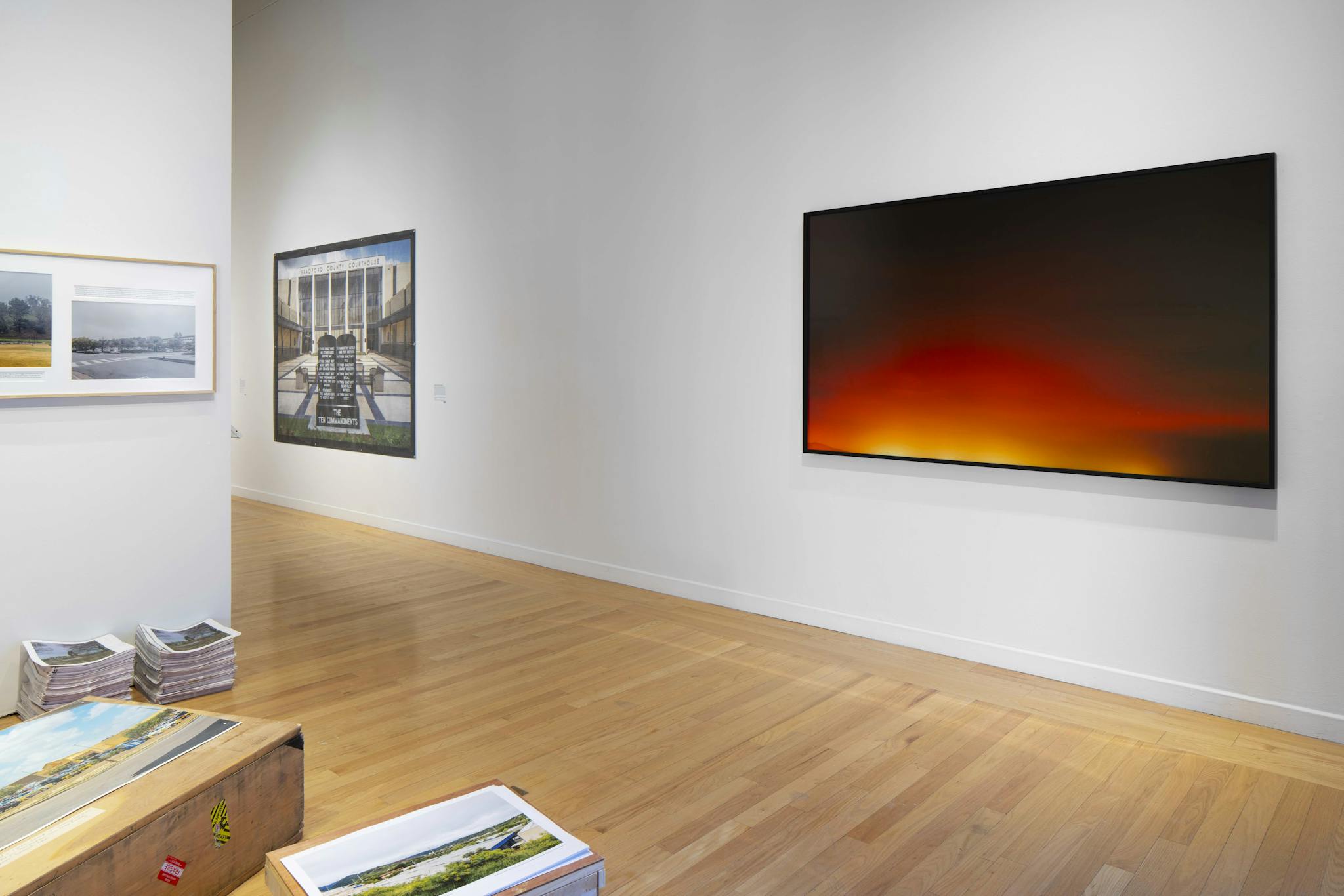
(Right) Trevor Paglen, Color Study (San Quentin State Prison, San Quentin, CA), 2016, installation view. Photo: Peter Harris.
A strong thread through the exhibition is art that is demonstratively about the process of investigation and data. “It seemed important to share the research the artists were doing with the audience,” said Puleo. At the exhibition entrance, Ashley Hunt sets a tone of fact-finding with her documentary project “Degrees of Visibility.” Reproduced photographs placed upon cardboard boxes create a scene of intentional disarray. Hunt took photos of prisons from public street views and captioned each with its prisoner population. Gallery visitors may look through the large-format photographs and take a newsprint handout with photos of covered confederate sculptures and an interview between the artist and a collaborator, Elizabeth Webb.
Like Hunt’s “Degrees of Visibility,” Trevor Paglen’s “Color Study (San Quentin State Prison, San Quentin, CA)”supports the Ground section, concentrating upon the prison structure. Paglen crops what is surely an imposing building, focusing instead upon an attractive gradient of glowing colors. Paglen’s practice evolved to focus upon surveillance and data collection, and early in his career, he was a prison rights activist. Hunt and Paglen’s contrasting approaches—one documentary, the other transcendentally polished—both train the gaze upon a complex one would ordinarily look away from.
This thoughtful exhibition has the capacity to share the framework not only of prisons, but of resistance and reform. Gaining the vocabulary for taking on systemic change is a meaningful and empowering step. “Walls Turned Sideways” provides a common language that facilitates engaged viewers to build or sustain frameworks toward prison reform. The approach is emphatically an aesthetic, humane space for study, and, upon exiting the galleries, many visitors will feel that the work has just begun.
“Walls Turned Sideways: Artists Confront the Justice System” is currently closed to the public due to COVID-19. The exhibition is viewable via the Tufts University Art Galleries mobile app by Cuseum. Learn more here.
